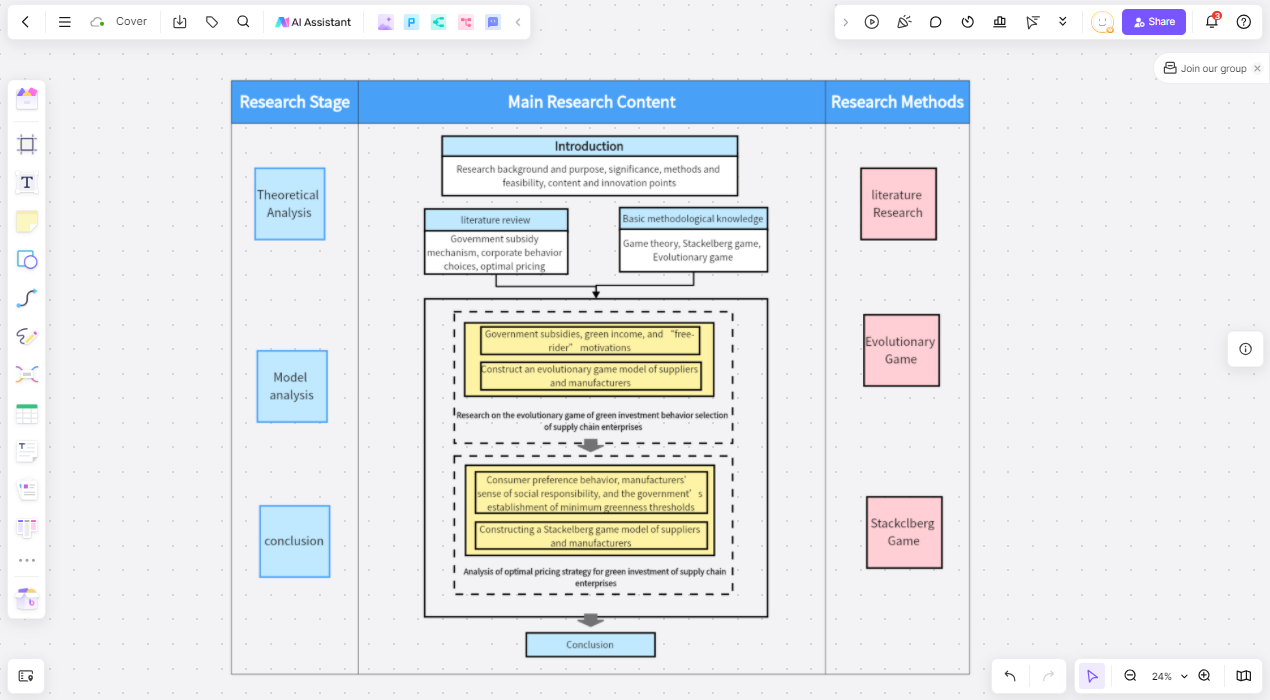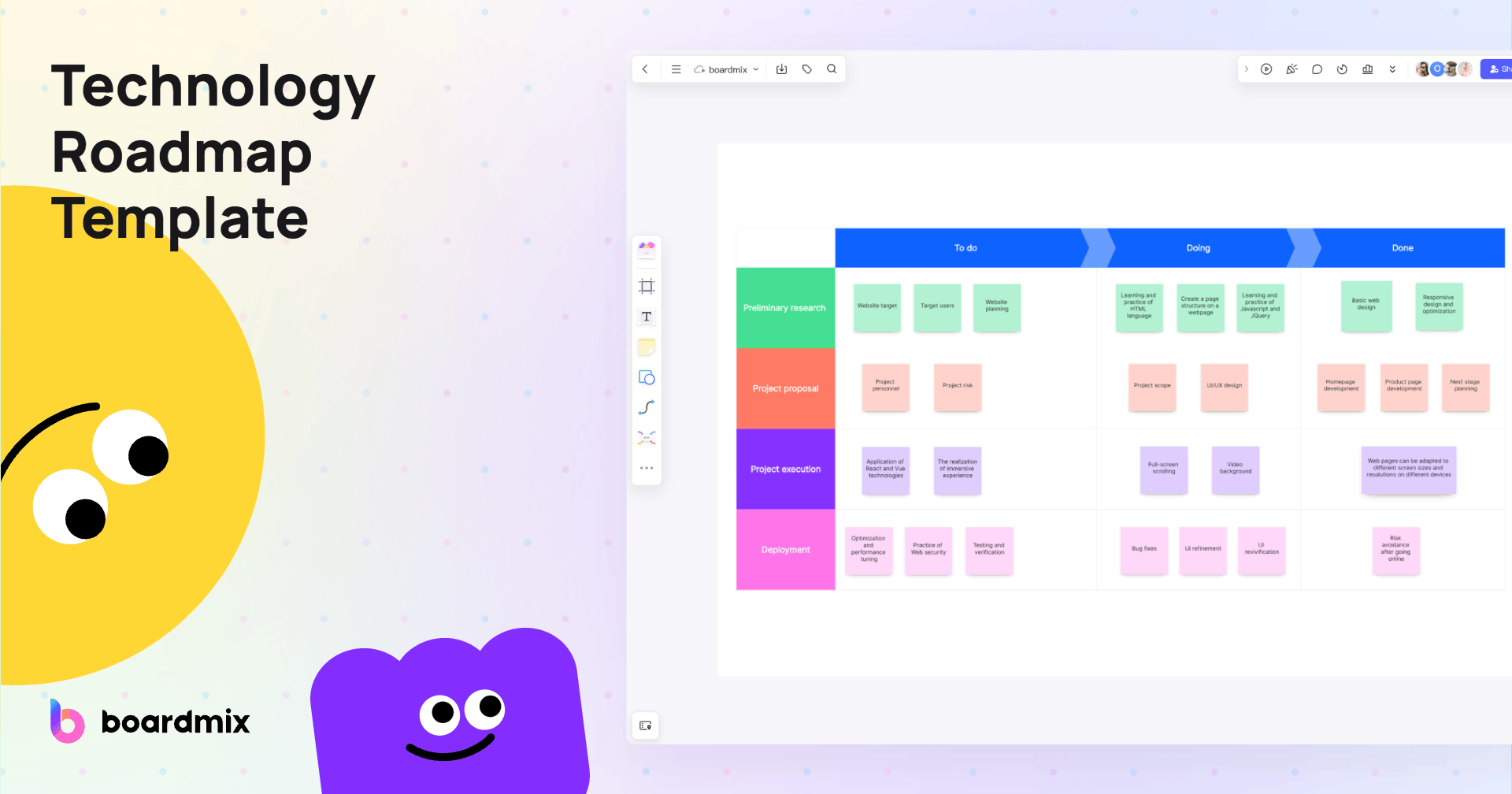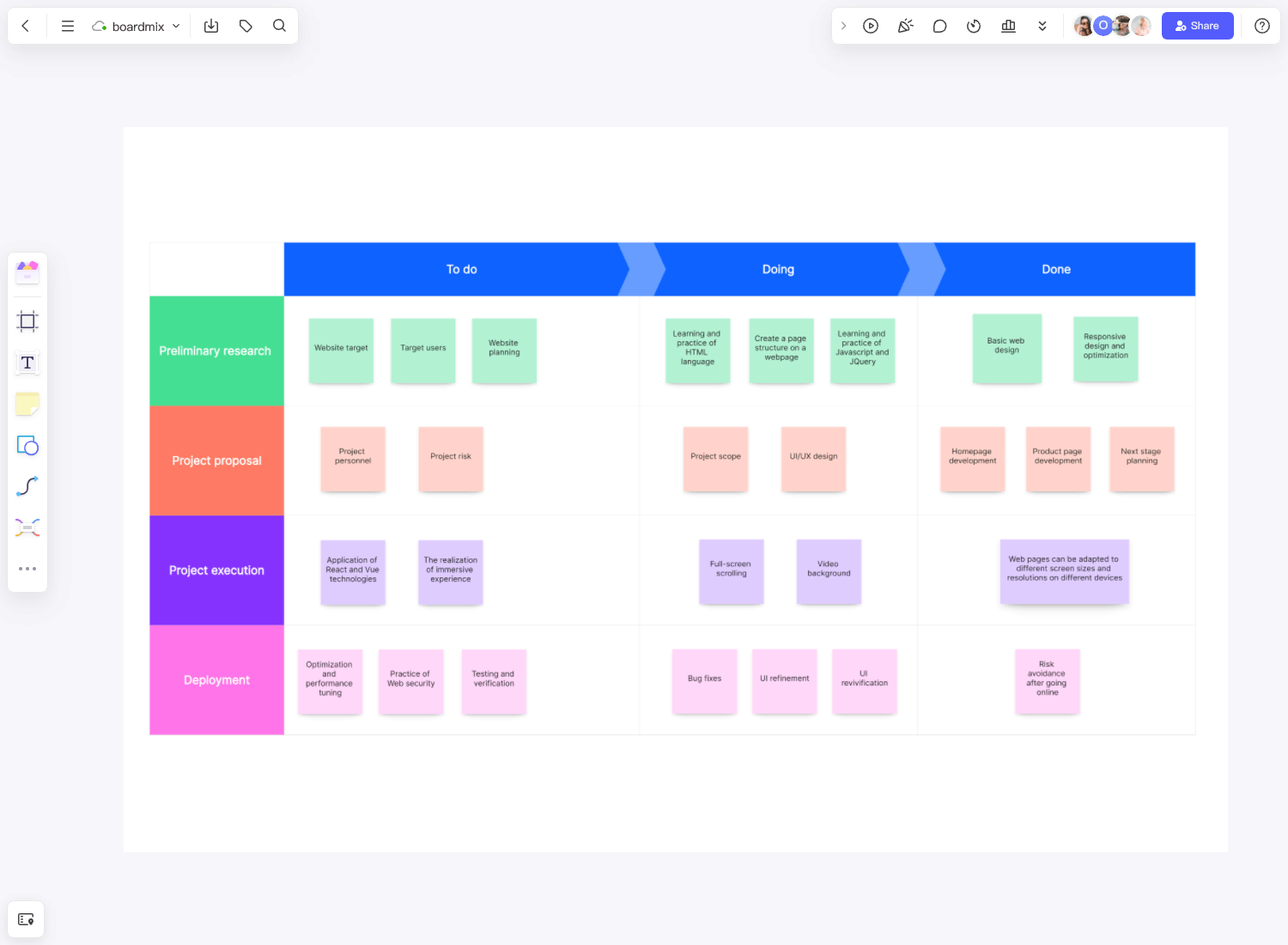A technology roadmap can be viewed as a strategic tool that outlines a company's or organization's technology development and innovation plans. It not only sets goals and deadlines but also details the technologies and resources required to achieve these goals. Whether you are an entrepreneur, investor, or developer, understanding and being able to create an effective technology roadmap is an essential skill.
Definition of a Technology Roadmap

A technology roadmap is a management tool used for planning and coordinating technology development strategies. By depicting the timeline of technology development, it shows the path to achieving technological goals, key milestones, and critical junctures. A technology roadmap helps companies or organizations to define their future direction, prepare for technological advancements, and allocate resources effectively to better respond to market changes and competitive pressures.
The important functions of a technology roadmap include:
Planning Technology Development: A technology roadmap outlines the blueprint for technology development, helping companies or organizations plan future technology development paths and strategies.
Coordinating Resource Allocation: By setting clear technological goals and plans, a technology roadmap helps companies or organizations better coordinate and allocate resources, improving resource utilization efficiency.
Predicting Market Changes: A technology roadmap assists companies or organizations in predicting market changes and timely adjusting technological strategies to better cope with market competition.
Improving Decision Efficiency: A clear technology roadmap enables companies or organizations to make decisions more quickly and reduces delays caused by a lack of clear direction.
Stimulating Innovation: Clear technological goals and plans can stimulate internal innovation within the company or organization, driving technological advancement.
Types of Technology Roadmaps
(1) Industry Technology Roadmap
Purpose: Mainly used to outline the development path and trends of a specific industry.
Creation: Usually conducted by industry associations, research institutions, or government departments, requiring in-depth research and analysis of industry technology development trends, key technologies, market demand, and more.
Form of Expression: Timeline charts that show key technological development milestones and junctures.
Function: Provides a shared vision of technology development within the industry, helping companies understand and grasp industry trends for better strategic planning and decision-making.
(2) Enterprise Technology Roadmap
Purpose: Mainly used for planning the internal technology development and innovation strategies of a company.
Creation: Typically done by the company's R&D department, strategic planning department, etc., requiring in-depth research and analysis of the company’s technological capabilities, market demand, competitive environment, and more.
Form of Expression: Flowcharts, matrix diagrams, etc. that clearly depict the company’s future technological goals, key nodes, and resource allocation.
Function: Helps the company identify its technological strengths and weaknesses, stimulate internal innovation, and better respond to market competition.
(3) National Technology Roadmap
Purpose: Mainly used for planning national-level scientific research and technology development directions.
Creation: Usually developed by government departments or related research institutions to guide national research funding, project selection, and more.
Form of Expression: Timeline or network structure charts that show key scientific issues and major projects.
Function: Provides an overall plan for national research activities, helping the country to identify research priorities, drive scientific progress, and promote social development.
What a Technology Roadmap Includes
(1) Technological Goals
This is the core of the technology roadmap, specifying what the company hopes to achieve through technology. These goals may include developing new products, improving existing products, increasing production efficiency, reducing costs, etc.
(2) Technological Pathway
These are the steps or methods to achieve the technological goals. It can include R&D plans, product development plans, technology cooperation plans, etc. Each step should detail the required technologies and tasks.
(3) Timeline
This is the schedule for achieving technological goals. It can include start and end dates for each stage and key milestones. It should clearly indicate the expected completion date for each task and allow for flexibility to handle unforeseen situations.
(4) Resource Allocation
These are the resources required to achieve the technological goals, including manpower, funds, equipment, etc. It should list the resources needed for each task in detail and optimize allocation to avoid waste.
(5) Risk Assessment
This is an evaluation of the risk factors that could affect the achievement of technological goals and the strategies to handle them. Possible risks include technical failures, cost overruns, delays, etc.
(6) Key Performance Indicators (KPIs)
These indicators measure the effectiveness of the technology roadmap implementation. They may include project completion rate, quality control, cost-benefit analysis, etc.
(7) Technology Trends and Market Demand Analysis
This involves in-depth analysis of current and future technology trends and market demand. It requires understanding the latest research results, industry dynamics, customer needs, etc.
(8) Competitor Analysis
Understanding and analyzing competitors' R&D trends and product strategies to better develop your own technology roadmap. It requires collecting publicly available information on competitors and conducting comparisons and analyses.
How to Create a Technology Roadmap

(1) Basic Requirements for Creating a Technology Roadmap
Ease of Understanding and Presentation: The reasons provided must be strong, so avoid complex structures and excessive data. Keep the information simple, comprehensive, and clear so that stakeholders can quickly grasp the advantages of your plan, increasing the likelihood of approval.
Practicality: Use a "promise less, deliver more" strategy. Plan feasible deadlines and reasonable resource allocation budgets. You don't want your team members to be overworked to meet unrealistic goals.
Agility: Allow enough space to adapt to changes and use flexible methods to achieve your business goals. As the market environment fluctuates and business needs change, your project may be on a completely different track a year later.
(2) Steps to Create a Technology Roadmap
Analyze and Understand Market Demand: Fully understand customer needs and the market environment, and define your technological goals.
Determine Technological Goals and Strategy: Based on market analysis, set technological goals and plan R&D investments and resource allocation.
Develop a Detailed Implementation Plan: Plan specific R&D steps, define the timeline and milestones.
Recommended Tools for Creating Technology Roadmaps
Boardmix: A professional online drawing tool with rich graphical symbols, lines, sticky notes, brushes, and text creation tools. It allows for free drag-and-drop layout adjustments of colors and sizes, making it easy for beginners to create technology roadmaps. Boardmix offers numerous templates and customization options, supporting real-time collaboration and sharing, making it ideal for teams. Click to use for free now.
ProductPlan: An easy-to-use roadmap tool that allows you to create intuitive and visually appealing technology roadmaps without specialized knowledge. It supports real-time updates and sharing, allowing team members to view and modify them anytime.
Roadmunk: This tool offers many preset templates and color schemes to help users quickly create professional-grade technology roadmaps. It also supports data import and export, making it highly compatible with other tools.
Trello: Although Trello is primarily a project management tool, its flexible card-based design is also well-suited for creating technology roadmaps. Users can plan and track technology development progress by moving and editing cards.
Successful Applications of Technology Roadmaps

(1) Intel
As a globally renowned semiconductor manufacturer, Intel uses technology roadmaps to guide its product development and technological innovation. Intel’s technology roadmap clearly outlines the development path of its core technology, semiconductor process technology. For example, every 18 to 24 months, Intel updates its semiconductor process technology from 90nm to 65nm, to 45nm, and now to 5nm. Each technology update means higher integration and stronger performance. Intel ensures its leading position in the global semiconductor market by implementing such a technology roadmap.
(2) Tesla
As a leader in the electric vehicle field, Tesla has also rapidly grown thanks to a meticulously planned technology roadmap. Tesla’s first product was a high-end market electric sports car, the Roadster. However, this was not Tesla’s ultimate goal. Its ultimate goal is to promote sustainable transportation for society.
To achieve this goal, Tesla planned a product roadmap from high-end to mass market. First, it launched the high-end market Roadster and Model S to accumulate funds and experience. Then, it launched the mid-market Model 3 and Model Y to reduce costs through mass production. Finally, it plans to launch affordable electric cars for the general public. Tesla achieved its vision for sustainable transportation through this product roadmap.
Whether it’s large companies or startups, technology roadmaps can provide them with a clear direction for technology development, helping them make correct decisions in complex market environments. Implementing a technology roadmap can help companies understand technology development trends, mitigate technological risks, save R&D costs, counter competitive pressures, and ultimately drive sustainable development and innovation.
Common Problems and Solutions for Technology Roadmaps
Insufficient Information Collection
Creating a technology roadmap requires a lot of information, including technology development trends, market demand, competitive environment, etc. If information collection is insufficient, the roadmap may deviate from reality.
Solution: Conduct in-depth research and analysis through various channels, such as industry reports, expert interviews, user surveys, etc.
The Boardmix can efficiently provide simple, practical and beautiful technology roadmap templates for every industry, and is currently free to register and click to use online!









